China's liquor industry has a long history and abundant production, while its industrial waste - distiller's grains, distillers grains cultivate Coprinus comatus, bioconversion rate of more than 100%.
First, the election, that is, bacterial selection. High-quality strains are the preconditions for high yield, and excellent strains have strong vitality, strong ability to decompose the substrate, rapid mycelial growth, wide adaptability, strong resistance, and high rate of mushroom formation.
Choose strains with strong resistance, high yield, single or twin births, fewer flakes, and pure white color.
Second, suitable, that is, timely cultivation. Coprinus is a type of temperature-type fungus, and the fruiting temperature is 15°C~28°C. Can use greenhouses, sheds, silkworm sheds and other facilities, in the spring and autumn cultivation. Generally, it can be cultivated from the beginning of August to the end of September, and from the early spring of January to the beginning of March.
Third, match, that is, a reasonable formula. Distillers grains contain a small amount of ethanol, active yeasts, etc. that are harmful to the growth of mycelia. The acidity is relatively large, and the pH is about 3 to 5. Fresh distiller's grains are used as the main ingredient. 1 50% of lees, 30% of cotton, 8% of bran, 8% of lime, 2% of gypsum, 1% of superphosphate and 1% of ammonium bicarbonate. 2 Distillers grains 39%, corn cob 39%, rice bran 10%, lime 8%, gypsum 2%, calcium superphosphate 1%, ammonium bicarbonate 1%. 3 90% of lees, 8% of lime, 1% of gypsum, and 1% of ammonium bicarbonate.
Fourth, the system, namely system culture medium. Mix lime, gypsum and ammonium bicarbonate directly into the distiller's grains, and then mix the cotton husk and corn cob well and adjust the pH to 9-11. Accumulate for 5~8 hours, open and let cool, bagging and sowing.
Fifth, sowing, that is, sowing germs. 25 cm 35-50 cm polyethylene bags are used. The sowing method is used for sowing. The seeding rate is about 15%. In the middle, close to the inside of the plastic bag, place 1 or 2 layers of bacteria. The bacteria on the two ends of the bag spread evenly. After loading the bag, the nails are drilled and ventilated with iron nails. At the time of germination, the number of layers in the bag is determined based on the temperature. The germination period temperature is 13 °C ~ 28 °C, the optimum 19 °C ~ 23 °C. Allow about 25 days to fill the bag.
Sixth, planting, that is, cultivation. According to the size of the shed, it can be used as a squat in the north and south of the shed. A group of two birds, 50 to 60 cm apart, with a spacing of 30 cm in the same group, 1.2 to 1.3 meters in width, and 15 to 20 cm in depth, filled with bottom water. After the water seeps, the lime is sprinkled with lime or plant ash. After a period of post-maturity, the mushroom sticks are bagged, buried in long bags and buried in short bags. Cover a garden soil with a thickness of 3cm (killing, sterilizing, composting), spray a heavy water pipe, add up the soil, level the sampan, and finally put a small shed on the squat to keep warm and moisturize. Pay attention to ventilation, wait for fruiting.
Seven, tube, that is, mushroom management. In about 10 days, the aerial hyphae grow on the surface of the soil. At this time, the amount of ventilation and water spray should be increased. When spraying water, spray less, lightly spray, avoid direct water spray when mushroom buds occur, spray water to the aisle or wall to increase the space humidity, and strengthen ventilation after spraying water. In the water spray, we must master that "the buds should not be sprayed (on the mushroom body), the space is sprayed; the young mushroom period (stem differentiation) should be sprayed and kept moist; the water of the mushrooming period (completely differentiated) should be lightly sprayed. method. And avoid direct radiation, otherwise affect the color of the mushroom.
Intermediates of Cladribine, Carvedilol, Lurasidone, olmesartan,
Risedronate Sodium, Atazanavir, Saxagliptin,
Dabigatran,Dapoxetine,Cefixime,Ceftaroline fosamil and etc.
In the short span of time, we have emerged as most promising
pharmaceutical intermediates manufacturers, chemical intermediates and
bulk drug intermediates suppliers. Our consistent supply, quality
products and dedication towards clients have opened up many
international avenues for our growth.
In addition, the company also can follow the customer's product needs custom synthesis services
MAIN API PRODUCTS USP/BP
|
PRODUCT NAME
|
CAS NUMBER
|
SPEVIFICATION
|
|
Azithromycin
|
117772-70-0
|
BEP
|
|
Cefpirome Sulphate sterile
|
84957-29-9
|
USP JP16
|
|
Ceftriaxone Sodium (Sterile)
|
104376-79-6
|
USP31
|
|
Cefotaxime
|
64485-93-4
|
USP30
|
|
Ciprofloxacin HCL
|
85721-33-1
|
USP/BP
|
|
Gentamicin sulphate
|
1405-41-0
|
BP
|
|
Levofloxacin
|
100986-85-4
|
USP27
|
|
Lincomycin Hydrochloride
|
859-18-7
|
EP6.0
|
|
Moxifloxacin Hydrochloride
|
186826-86-8
|
USP31
|
|
Tigecycline
|
220620-09-7
|
USP
|
|
Linezolid
|
165800-03-3
|
EP
|
|
Dexamethasone
|
50-02-2
|
USP/BP/EP
|
|
Methylprednisolone
|
83-43-2
|
USP/BP/EP
|
|
Dexketoprofen trometamol
|
156604-79-4
|
BP2008
|
|
Ibuprofen
|
15687-27-1
|
BP
|
|
Metamizol
|
68-89-3
|
DAB
|
|
Sulindac
|
38194-50-2
|
USP/BP/EP
|
|
Naproxcinod
|
163133-43-5
|
USP28
|
|
Tripelennamine Hydrochloride
|
154-69-8
|
USP28
|
|
Itraconazole
|
84625-61-6
|
USP/BP
|
|
Cytarabine
|
147-94-4
|
USP31
|
|
Leucovorin Calcium
|
1492-18-8
|
USP32
|
|
Valsartan
|
137862-53-4
|
USP30
|
|
Telmisartan
|
144701-48-4
|
USP31
|
|
Rosuvastatin Calcium
|
147098-20-2
|
USP/BP
|
|
Pitavastatin Calcium
|
147526-32-7
|
USP/BP
|
|
Fluvastatin
|
93957-54-1
|
USP31
|
|
Vinpocetine
|
42971-09-5
|
EP6.0
|
|
Atazanavir
|
198904-31-3
|
BP
|
|
Rosiglitazone
|
122320-73-4
|
USP30
|
|
Esomeprazole Magnesium
|
161973-10-0
|
USP/BP
|
|
Topiramate
|
97240-79-4
|
USP31
|
|
Fexofenadine HCl
|
153439-40-8
|
Inhouse
|
|
Bosentan
|
147536-97-8
|
Inhouse
|
|
D-Cysteine
|
921-01-7
|
Inhouse
|
|
D-Phenylalanine
|
673-06-3
|
Inhouse
|
|
Linagliptin
|
668270-12-0
|
Inhouse
|
|
Rivaroxaban
|
366789-02-8
|
USP
|
|
Saxagliptin
|
361442-04-8
|
USP
|
|
Vildagliptin
|
274901-16-5
|
USP
|
Major Pharmaceutical Intermediates
|
Items Descripation
|
Structure
|
Application
|
MICA ESTER
CAS No: 246035-38-1
Purity: ≥98%
|
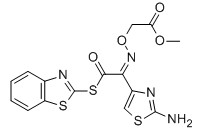
|
For Cefixime
|
EHATA
CAS No: 64485-82-1
Purity: ≥98%
|

|
For Ceftazidine
|
2-Chloroadenine
CAS No: 1839-18-5
|

|
For Cladribine, Fludarabine et al
|
Bicyclo(2,2,1)Heptane-2,3-di-exo-carboximide
CAS No: 14805o-29-9
|

|
For Lurasidne
|
(R,R)-1,2-Bis(methanesulfonyloxy methyl)Cyclohexane
CAS No: 186204-35-3
|

|
For Lurasidone
|
3-(Piperazin-1-yl)benzol[d] isothiazole
CAS No: 87691-87-0
|
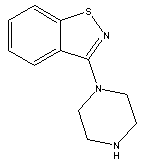
|
For Lurasidone
|
Trityl olmesartan
CAS No: 144690-92-6
Purity: ≥98%
|
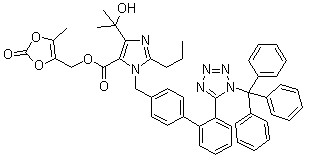
|
For olmesartan
|
3-Acetyl Pyridine
CAS No: 350-03-8
|

|
For Risedronate Sodium
|
3-(AceticAcid)pyridine HCL
CAS No: 6419-36-9
|

|
For Risedronate Sodium
|
Risedronic Acid
CAS No: 105462-24-6
|

|
For Risedronate Sodium
|
3-Hydroxy-1-adamantyl-D-Glycine
CAS No: 709031-29-8
|

|
For Saxagliptin
|
(1s,3s,5s)-3-(aminocarbonyl)-2-azabicyclo(3,1,0) hexane-2-carboxylic acid tert-butyl ester
CAS No: 361440-67-7
|

|
For Saxagliptin
|
(S)-N-Boc-3- hydroxy-adamantylglycine
CAS No: 361442-00-4
|
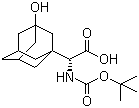
|
For Saxagliptin
|
2-Azabicyclo[3.1.0] hexane-3-carbonitrile, (1s,3s,5s)-
CAS No: 866083-42-3
|

|
For Saxagliptin
|
Ethyl 3-(pyridin-2-ylamino) propanoate
CAS No: 103041-38-9
|

|
For Dabigatran
|
N-(4-Cyanophenyl) glycine
CAS No: 42288-26-6
|
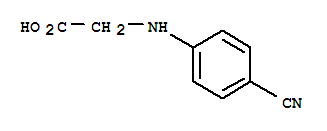
|
For Dabigatran
|
4-methylamino-3-nitrobenzoic Acid
CAS No: 41263-74-5
|

|
For Dabigatran
|
S-3-Amino-3-phenylpropanoic acid ethyl ester HCL
CAS No: 167834-24-4
|

|
For Dapoxetine
|
(S)-3-Amino-3-Phemylpropan -1-ol
CAS No: 82769-76-4
|
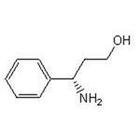
|
For Dapoxetine
|
(S)-3-Dimethylamino-3-Phemylpropanol
CAS No: 82769-75-3
|

|
For Dapoxetine
|
4-{4-[4-(hydroxydiphenylmethyl)-1-piperidinyl]-1-butynil}-α,α-dimethyl benzene acetic acid
CAS No: 832088-68-3
|
|
For Fexofenadine HCl
|
Methyl 2-(4-(4-chlorobutanoyl)phenyl)-2-methylpropanoate
CAS No:154477-54-0
|

|
For Fexofenadine HCl
|
5-Bromo-2-chlorophenyl)(4-ethoxyphenyl)methanone
CAS No 461432-22-4
|

|
For Dapagliflozin
|
4-(5-Bromo-2-chlorobenzyl)phenyl ethyl ether
CAS No :461432-23-5
|

|
For Dapagliflozin
|
APIs & Intermediates
Mica Ester,Pharma Intermediates,Ciprofloxacin Hcl Uses,Active Pharmaceutical Ingredients
NINGBO VOICE BIOCHEMIC CO. LTD , https://www.pharma-voice.com






















